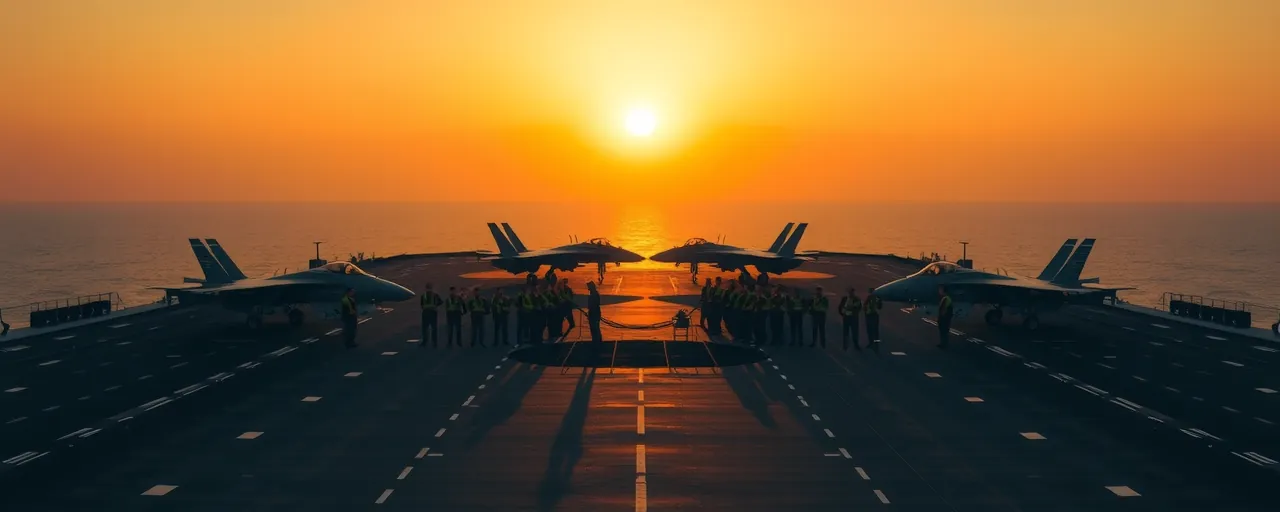A Blockbuster Showcase of American Power
Mission: Impossible – The Final Reckoning doesn’t just deliver Tom Cruise’s death-defying stunts. It puts the U.S. military’s strength front and center, thanks to a bold partnership with the Department of Defense. From the USS George H.W. Bush to CV-22 Ospreys and Virginia-class submarines, this film turns Hollywood spectacle into a tribute to those who serve.
These collaborations do more than make movies look real. They remind Americans why our military stands as the world’s gold standard. With enlistment at its lowest since 1947, films like this spark pride and purpose, urging young people to consider a life of service.
Why does this matter to everyday taxpayers? Every frame showcasing a sailor’s precision or an airman’s skill reinforces a truth: America’s security depends on a strong, respected military. This partnership delivers that message with unmatched clarity.
The Pentagon’s role in Mission Impossible 8, advising actors and lending iconic assets, shows how Hollywood can amplify our values while respecting operational security. Studios gain stunning visuals, and the military gains a platform to inspire. It’s a deal that benefits everyone.
Some voices question this teamwork, claiming it veers into government overreach. Let’s examine that argument and see why it falls short.
Why These Partnerships Work
The DOD’s Entertainment Media Office sets strict guidelines. Studios gain access to ships, aircraft, and advisors, but only if scripts respect military values and safeguard sensitive details. In Mission Impossible 8, Navy crew members on the USS George H.W. Bush guided actors to perfect every patch, phrase, and procedure, creating scenes that honor the real heroes.
The proof is in the numbers. Top Gun in 1986 sent Navy enlistment soaring by 500 percent and boosted Air Force applications by 8 percent. Its 2022 sequel saw similar surges. These films don’t just captivate—they call Americans to action, filling critical recruitment gaps.
Some critics label this taxpayer-funded propaganda, citing films like Platoon, which lost Pentagon support for their critical tone. But the DOD isn’t silencing dissent. It’s prioritizing resources for stories that align with its mission: defending the nation. Public funds should back projects that uplift, not undercut, that purpose.
Surveys reinforce this. After watching DOD-supported films, 70 percent of viewers see U.S. military actions as justified. This reflects shared values, not manipulation. It’s storytelling that connects with Americans who cherish security and sacrifice.
In Mission Impossible 8, advisors ensured submarine captains and Special Forces Marines were portrayed with authenticity. Actor Tramell Tillman, playing a submarine captain, trained with Navy officers to capture their steady leadership. This commitment to accuracy honors those who serve.
Yet some argue the DOD should exit Hollywood to avoid shaping public views. Every platform—news, social media, academia—already influences opinion. Why should the military, which protects our freedoms, stay silent? Its story deserves a place in the cultural conversation.
Building a Stronger Future
This tradition spans decades. Since World War II, the Pentagon has partnered with filmmakers to share America’s story. From Why We Fight to Zero Dark Thirty, these efforts humanize our military, showing sailors, airmen, and Marines as dedicated professionals. Mission Impossible 8 carries that torch, portraying service members with respect and precision.
Today’s challenges demand this approach. Global threats grow, and recruitment struggles persist. DOD-Hollywood partnerships bridge the gap between civilians and those who serve, fostering appreciation for their sacrifices. When Tom Cruise met sailors on the USS George H.W. Bush, it boosted morale for a weary crew, showing the human impact of these efforts.
The alternative risks a weaker nation. Allowing anti-military narratives to dominate screens could erode public support and deter enlistment. Instead, these collaborations ensure the military’s story is told with integrity, uniting Americans around shared values. That’s a legacy worth defending.
